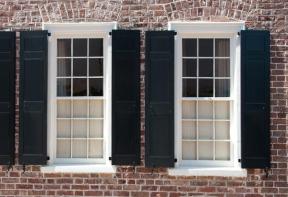Window shopping
The clear truth about buying and installing new windows
While every window offers a glimpse of the outside world, not all are created equal. Some perform better than others at keeping the outside out and the inside in. And this depends on installation, materials and an extensive list of choices: frames made from wood, vinyl, aluminum or fibreglass; single-, double- or triplepane; argon or krypton inert gas; and an assortment of glazes that makes Tim Hortons’ seem modest. Then there’s placement-large, south-facing windows allow in natural light that keeps your home cozy and bright. But will this mean your house becomes an oven once summer heats up?
Relax. Choosing a window isn’t as difficult as it sounds. Like everything DIY, it takes a bit of education, plus your personal preferences. It’s best to start simple: will the window be fixed or operable? Fixed windows are fine in large, open areas-in a living room, high up on a wall or on a door-so long as there is a fire exit nearby and you don’t need ventilation. The national building code requires that every bedroom have an emergency exit, so if you’re thinking of adding a basement bedroom, make sure the windows are operable.
Operable windows come in many forms, including ones that turn and tilt (common in office buildings), casement windows that open to the side, double-hung (on which the bottom pane slides up into the upper pane), sliding windows and more. In every case, an operable window should have a closure and a locking mechanism that pulls the unit tight against the seal for security and energy efficiency.
Installation insight
Many renovation projects involve replacing an existing window, so placement isn’t often a factor you can change, but it does have a bearing on the new window you choose. South-facing windows allow passive solar heating, which means you can collect free heat in the cooler months simply by having a window that faces the sun’s rays. During the winter, the sun’s elevation is lower at midday, so you’ll gain more heat; in the summer months, when the sun shines at a higher elevation, very little sun will hit the south-facing windows, which means your home won’t turn into a sauna. (Overheating tends to occur from unshaded west-facing windows.) So, if you are replacing or adding windows, consider a larger size for south-facing walls, and think about installing awnings or eaves over westfacing windows.
Installation can be tricky, especially with higher-end windows, for which performance depends on a tight fit with zero defects or cracks. Obviously, all windows must be installed square, plumb and level with shims and spacers. Most mistakes happen once the window is roughed in. Here’s where insulation installation is key: any cracks or gaps will allow warm air to escape and cool air to penetrate your home. Also, warm air contains water vapour, and if this is allowed to seep into the exterior wall, you’ll soon develop a condensation (read: mould) problem.
Most contractors agree that injected foam is the best insulation material for sealing windows. Because the foam begins as a liquid, it fills every nook and cranny, whereas traditional fibreglass insulation-the pink stuff-doesn’t always fit properly, especially when it has to be torn and fitted into tight spots and around wires and piping. That said, spray foam insulation has to be injected carefully: overfilling can distort the window frame and cause the glass to jam or crack.
Also check that the foam insulation is compatible with the window frame, be it vinyl, wood, aluminum or fibreglass. When foam is used with a vinyl or aluminum frame, for example, there’s a possibility the bond between the foam and the frame will break as a result of the frame’s contraction and expansion. In any case, it’s best to ask the window supplier before firing up the spray foam.
Jump to a section
- Page 1 : Installation insight
- Page 2 : Glass and glaze
- Page 3 : The different types of window frames
To leave a comment, please log in












No comments